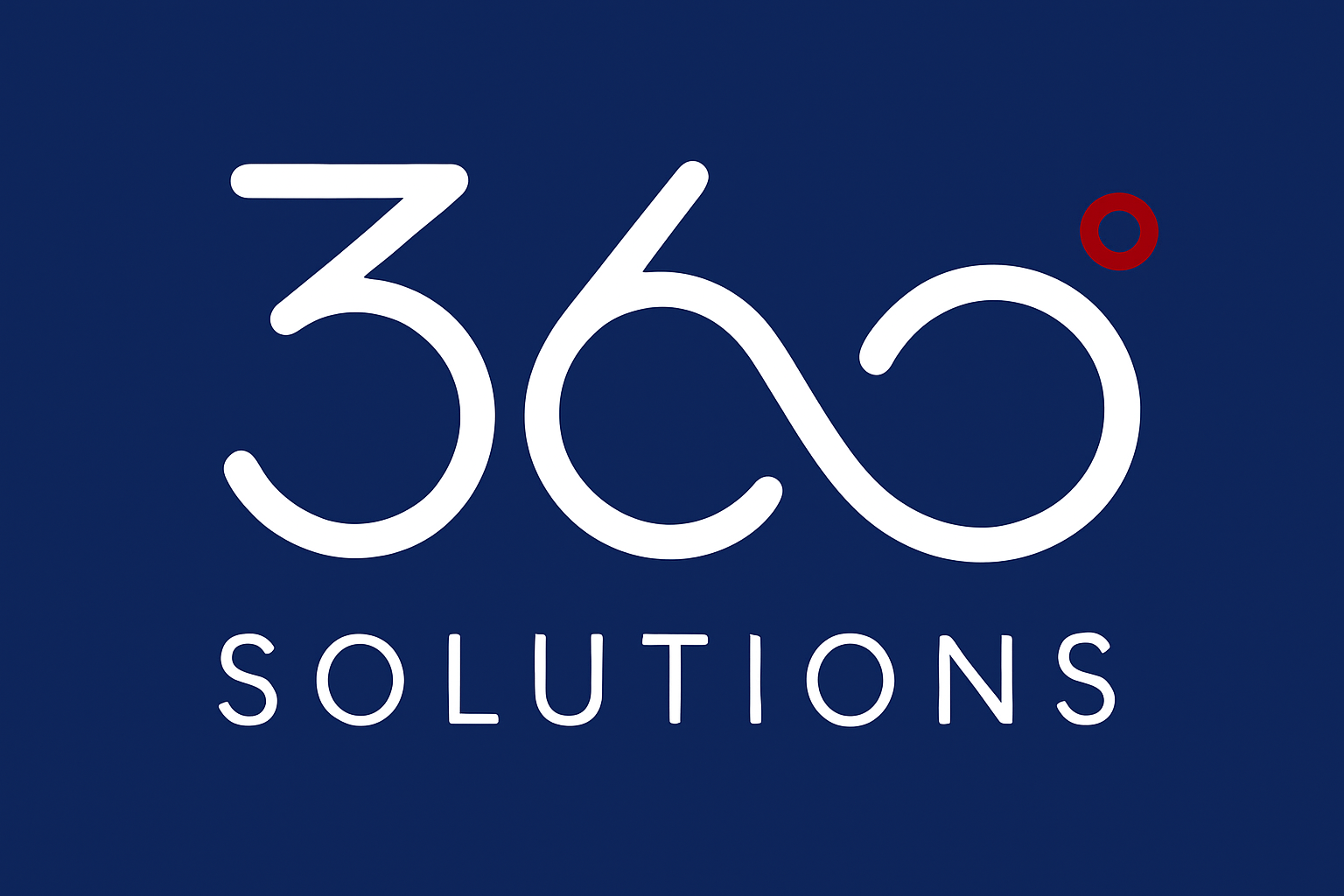How can we help you?
Cyber Security Assessment
A Cyber security assessment is a process of evaluating security controls to examine the overall organisation’s security infrastructure.
This includes validating the organisation’s preparedness against the known and unknown vulnerabilities, attack vectors in the digital cyber sphere, and business process in order to engage the remediating steps to lower the risk and attack surface.
Overall, security assessments help track the systems, applications, and network flaws and help implement appropriate defensive controls and keep the policies up to date.
The cyber-security assessment scope varies and depends upon the business nature, objective, organisation size, and the compliance business adhere to.
With a suitable assessment, an organisation can identify its cyber weaknesses and strengths and develop an appropriate road-map to prioritise and resolve them.
Application Security Assessment
Application security assessment is the process of testing applications to find threats and determining the measures to put in place to defend against them.
Through the assessment process, organizations can evaluate the current security posture of their applications and determine the next steps for further protecting their software from future exploits.
A thorough application security assessment can enable organizations to identify potential threats to their software and applications before they become a problem.
Security incidents are a substantial risk for today’s software-driven business environment because they can have a negative impact on the company’s reputation and revenue.
In many industries, application security assessments may even be required to comply with cybersecurity laws and regulations. For example, the PCI standards suggest adherence to OWASP Top 10 guidelines.
Vulnerability Assessment and Penetration Testing
The Vulnerability Assessment (VA) services provided by 360 Solutions allow clients to have better knowledge of their vulnerabilities and how these could be addressed.
To take things to the next level, 360 Solutions accredited cyber-security consultant can conduct a Penetration Test (PT) which demonstrate how these vulnerabilities could be exploited against the interest of clients.
The VA and PT represent the first step and the next in the journey of cybersecurity. Clients can enjoy affordable services from 360Solutions and better safeguard their businesses against loopholes and potential attacks.
With a comprehensive VA report produced by our consultants, clients are well-informed of the current status of their information security and can respond by forming corresponding policies. PT, as an extension of VA, demonstrates the exploitability of the clients by attacking their system in a synthetic environment.
Clients can experience the “worst-case-scenario” without the incurrence of actual damages.
Malware Analysis
Malware analysis is the use of tools and procedures to understand the behaviour and purpose of a suspicious file. The process aims to detect and mitigate any potential threat.
This practical process enables analysts to understand the malware’s functions, purposes, and potential impact. To achieve this, security teams use malware analysis tools. They assess and evaluate specific malware samples, usually inside a contained environment called a sandbox.
Incident respondents and security analysts use malware analysis to:
* Identify the source of an attack.
* Categorise incidents by the level of severity.
* Improve the efficiency of the incident response process.
* Evaluate the potential damage from a security threat.
* Enrich threat hunting processes.
Risk Assessment
IT security risk assessments focus on identifying the threats facing your information systems, networks and data, and assessing the potential consequences you’d face should these adverse events occur.
Risk assessments should be conducted on a regular basis (e.g. annually) and whenever major changes occur within your organisation. Red Teaming
Red Teaming is a security discipline originating in the military arena that simulates full-spectrum cyber-attacks.
This allows you to measure your cyber defence’s effectiveness against malicious actors and allows your defenders to practice their detection and response capabilities in a controlled environment and validate or refine them.
Lastly, the Red Team can also expose gaps in your overall security defence capabilities by targeting your organisation and not being confined by the constraints of a regular penetration test.
Network & Security Operations
Network and security operations refer to the processes and practices used by an organisation to monitor, manage, and secure their computer networks and systems.
This includes managing network infrastructure, monitoring network traffic, detecting and responding to security threats, and ensuring data protection and compliance with regulatory standards.
Network and security operations involve a combination of hardware, software, and personnel, and typically include tools such as firewalls, intrusion detection systems, and security incident and event management (SIEM) platforms.
Effective network and security operations play a crucial role in protecting an organisation’s assets and maintaining the integrity and reliability of their network and systems.
Active & Passive Networking
High-speed, secure and reliable IP connections that support your business innovation, improve employee productivity and provide an engaging customer experience
Local Area Network (LAN)
A Local Area Network (LAN) is a group of computers or other devices interconnected within a single, limited area, typically via Ethernet or Wi-Fi. LAN links computers together and provides shared access to printers, files, and other services. It consists of access points, cables, routers, and switches that enable devices to connect to web servers and internal servers within the office, a single building, campus or home network, and to other LANs via Wide Area Networks (WAN).
Campus wifi
Wi-fi is enabled in the entire campus of a University with high speed internet connection to allow the students to access the internet no-matter wherever they are. The coverage is not just limited to the classrooms, instead it extends to all the facilities within the campus premises.
Outdoor Broadband Wireless
Outdoor Broadband Wireless Solution gives you the complete indoor & outdoor broadband solution. It not only creates a WiFi network outdoors but due to it’s high gain WiFi antennas, can cover up to 99% of your home or businesses too.
Wide Area network (WAN)
A wide area network (WAN) is a data network used for connecting computers over a wide geographical area. WANs are often used by larger corporations or organizations to enable the transfer of data. However, now even small businesses can benefit from WANs as a way of increasing their communications capabilities.
A WAN requires continuous maintenance. We take this responsibility off of your hands and provide you with a world class support system. The Software Definition portion of the WAN provides the intelligence, capable of instantly understanding the type of data being transmitted and what routing and security are needed to make it happen smoothly and efficiently.
This improves the WAN functionality at a lower cost for your organisation while being able to handle all kinds of voice and data transmission. SD-WAN is enabling our clients to move any kind of software application across multiple locations with better performance.
As a managed SD-WAN service provider we offer installation services, maintenance and upgrades, monitoring and connectivity services.
Software Defined WAN (SD WAN)
A Software Defined WAN (SD WAN) enables you to make enterprise level modifications to your entire network in one motion. Our managed SD WAN services takes it to the next level by providing 24 x 7 support by our highly trained professionals through our NOCs.
SD WAN stands for Software-defined Wide Area Network. If your business runs from multiple locations, has a distributed workforce and uses multiple applications, then your business can benefit from using an SD WAN. We, at Synoptics are well positioned to not just setup, but also provide continuous support for your SD WAN requirements.
IP based Video and Voice
VoIP or Voice Over Internet Protocol allows businesses to communicate a lot more efficiently than over phone lines.
Most contemporary businesses are IT driven and they have networks in place that are readily available to be leveraged for their voice calling requirements. What this means is that their existing networks will be used to make calls through VoIP instead of traditionally used public switched networks.
The cost advantage of moving to VoIP is immediately apparent due to the fact that a network . But there are more advantages that may not be so apparent. For example, a VoIP based system provides flexibility and scalability. Even telecommuting becomes a possibility because now their employees can stay connected to their secure line with just an internet connection.
Extra features that cost extra in traditional phone lines are available for free. VoIP systems are intrinsically scalable and flexible.
Synoptics has provided voice network solutions for clients across the country. Through our advanced NOCs, we also provide round the clock support to our voice networks which are a part of the network systems that we manage..
Data Centre Transformation
A platform that supports your organisation’s applications, connecting your people to the tools and applications they use to transact, collaborate and communicate
Compute
Being prepared for threats and responding to attacks is entirely different things. We see the big picture and we understand the cost implications that come with it. Engage with us for enhanced cost reduction on incident response and compliance management.
Servers are computers that run dedicated applications for efficient management of network resources. Yet they are called servers because they do dedicated tasks pertaining to its configuration.
Business use a local network often to perform network tasks. These tasks are essentially processing requests for data or information to another server or computer within the network. A client or user computer can request a server for data and the server can ‘serve’ this request.
A server, due to its nature, requires more computing power or powerful hardware. Also, due to the constant evolution of business processes, servers need to be able to adapt to current and future requirements.
Our engineers approach your computing needs from a holistic point of view and propose solutions not just based on your current needs, but also your immediate future needs.
We have a wealth of experience setting up compute solutions for clients of various sizes and needs. It is our commitment to provide you with complete setup and support for your compute needs through out their lifecycle.
Storage
Data Center Storage is the collective term used to outline the tools, technology and strategies to design, implement, manipulate and monitor storage infrastructure and resources inside a data center. It is a part of the data center infrastructure and consists of all IT/data center assets that at once or not directly play a part in storage within a data center.
Virtualization
Data Virtualization is a technique that acts as a bridge among multiple and different data sources, bringing all the crucial decision making data collectively in one virtual place which makes data analytics more efficient.
DC Networking
An SD DC (software-defined data center) is a data storage facility wherein all infrastructure elements — networking, storage, CPU and security — are virtualized and brought as a service. Deployment, operation, provisioning and configuration are abstracted from hardware.
IT Security
We provide visibility and dynamic protection of your digital infrastructure. Agile architecture, tools, technologies and processes enable continual monitoring and response across your networks – and can scale with your business.
Cloud Security
Cloud security is the protection of data stored online via cloud computing platforms from theft, leakage, and deletion. Methods of providing cloud security include firewalls, penetration testing, obfuscation, tokenization, virtual private networks (VPN), and avoiding public internet connections.
Intrusion Prevention System IPS
An Intrusion Prevention System (IPS) is a network security/threat prevention technology that examines network traffic flows to detect and prevent vulnerability exploits. Vulnerability exploits usually come in the form of malicious inputs to a target application or service that attackers use to interrupt and gain control of an application or machine. Following a successful exploit, the attacker can disable the target application (resulting in a denial-of-service state), or can potentially access to all the rights and permissions available to the compromised application.
Next-generation firewall (NGFW)
A next-generation firewall (NGFW) is a part of the third generation of firewall technology, combining a traditional firewall with other network device filtering functions, such as an application firewall using in-line deep packet inspection (DPI), an intrusion prevention system (IPS).
Like regular firewalls, NGFW use both static and dynamic packet filtering and VPN support to ensure that all connections between the network, internet, and firewall are valid and secure. The difference between the two is an NGFW’s ability to filter packets based on applications.
End Point Security
Endpoint security is the practice of securing endpoints or entry points of end-user devices such as desktops, laptops, and mobile devices from being exploited by malicious actors and campaigns. Endpoint security systems protect these endpoints on a network or in the cloud from cybersecurity threats. Endpoint security has evolved from traditional antivirus software to providing comprehensive protection from sophisticated malware and evolving zero-day threats.
Cloud Services
Hybrid and Multi-Cloud Advisory & Cost Optimization Services
360 Solutions Cloud Advisory service enhances your business by developing a custom roadmap according to your work and infrastructure. We assess your cloud-related goals, and accordingly establish a framework that establishes roles, recommends architecture related suggestions. All in all, we ensure the growth of your business, leveraging cloud computing and services to make it happen.
Adopting a cloud strategy can be difficult, but we help you make the right choice, identifying your scope, vision, and gathering requirements.
Our experts conduct a GAP Analysis for the cloud readiness of your application and IT infrastructure.
Strategize cloud transformation roadmap, creating an architectural plan for your application migration.
Post analysis and strategies, 360 Solutions builds a cloud infrastructure best suited for your business model and deploys applications on it.
Finally, post-delivery, we provide 24/7 support whenever necessary.
Through all these steps 360 Solutions ensures you are involved and aware of each stage and of the progress towards your goal.
Cloud Migration (Edge to DC to Cloud) and Reverse Migration Services (Cloud to DC to Edge)
360 Solutions Cloud Migration Services identifies areas of risk and opportunities for improving the performance of enterprise applications. It provides solutions to mitigate risk and maximize performance, that will lead to future business growth.
Our migration service accelerates and streamlines your application migration to public and private cloud platforms. Besides this, the service significantly reduces downtime and costs during the migration. We automate the entire migration process using our proven methodology and factory approach.
360 Solutions helps customers securely move workloads from on-prem to cloud and also between public or private cloud while modernizing platforms and managing next gen infrastructure.
360 Solutions Cloud Migration Services not only migrates a single server, or a single application, but also a group of servers or a group of applications to public or private cloud. It doesn’t matter if it’s a V2V, P2V, P2P, V2P migration.
DevOps and DecSecOps
Our customer focus is Rapid Response, Rapid Planning, Rapid Execution and full transparency. Our engagements start with an understanding of your needs and requirements. Key activities include, but are not limited to, the following:
- Scope, Initiation and Kickoff
- Governance: stakeholders, working groups, roles
- Business goals, success criteria
- Discovery and design workshops
- DevOps tools assessment
- Application build, test and release process review
- Application discovery and architecture review
- Define DevOps framework: CI/CD, Security, Tools selection and Monitoring
- Infrastructure as Code and integration
- Continuous security and testing framework
- DevOps implementation plan
- Monitor, measure, manage
- Application onboarding
- Performance and success measurements
- Develop standard runbooks
- Knowledge transfer
Managed Security Services
Turn data into knowledge and see your entire security picture, rather than isolated events. Our Managed Security Services (MSS) leverage investment in threat intelligence and advanced analytics. Feeding into a purpose-built platform, it provides best-of-breed capability to deliver a diverse array of Managed Security Services. Our supporting security experts deliver transparent and repeatable services, identifying and stopping advanced threats. Furthermore, providing insight and metrics into security posture and trends.
Backup & Recovery
Eliminate data silos and boost the value of all your data — at lower TCO — with 360 Solutions for backup and recovery of your traditional and modern data sources on a single platform.
On premise back up & Recovery
On-premise backups are presently the most common and famous backup solution. On-Premise or on-web website online backup method stores records locally on various devices which incorporates hard drives, disks, tape drives, or servers. Many organizations choose On-Premise Data Backup as they are considered secure, quick, and efficient because of the fast, low latency, backup and restoration speeds.
Cloud back up
Cloud Backup is a service in which the information, data and applications of an organization is stored on a faraway server. Cloud backup is a solution in which the data is readily available in event of system failure or any other calamities.
Data Bursting (hybrid to cloud)
Data Bursting refers to the broadcast of a very high bandwidth transmission over a short period. Data bursting happens when the data is sent at irregular intervals or it also occurs naturally when the download of data from the internet briefly experiences higher speeds.
Hybrid & Multi Cloud
As you begin to consider switching your business to the cloud, whether it be for application or infrastructure deployment, it is more important than ever to understand the differences and advantages of the various cloud services.
Though as-a-service types are growing by the day, there are usually three models of cloud service to compare:
- Software as a Service (SaaS)
- Platform as a Service (PaaS)
- Infrastructure as a Service (IaaS)
As you map your path to the cloud, the most important decisions revolve around how much you can—and want—to manage yourself and how much you want your service provider to manage.
SaaS vs PaaS vs IaaS
Each cloud model offers specific features and functionalities, and it is crucial for your organization to understand the differences. Whether you need cloud-based software for storage options, a smooth platform that allows you to create customized applications, or complete control over your entire infrastructure without having to physically maintain it, there is a cloud service for you.
No matter which option you choose, migrating to the cloud is the future of business and technology.
SaaS: Software as a Service
Software as a Service, also known as cloud application services, represents the most commonly utilized option for businesses in the cloud market. SaaS utilizes the internet to deliver applications, which are managed by a third-party vendor, to its users. A majority of SaaS applications run directly through your web browser, which means they do not require any downloads or installations on the client side.
PaaS: Platform as a Service
Cloud platform services, also known as Platform as a Service (PaaS), provide cloud components to certain software while being used mainly for applications. PaaS delivers a framework for developers that they can build upon and use to create customized applications. All servers, storage, and networking can be managed by the enterprise or a third-party provider while the developers can maintain management of the applications.
IaaS: Infrastructure as a Service
Cloud infrastructure services, known as Infrastructure as a Service (IaaS), are made of highly scalable and automated compute resources. IaaS is fully self-service for accessing and monitoring computers, networking, storage, and other services. IaaS allows businesses to purchase resources on-demand and as-needed instead of having to buy hardware outright.
Managed IT Services
- Managed Connectivity & Broadband Services
- Remote Infrastructure Management
- Installation & Commissioning Services
- Operations & Maintenance Services
- IT Facility Management Services (T&M based and SLA based)
Application Modernization, Containers & K8s-as-a-Services (On prem and across multi cloud)
Containers provide a standard way to package your application code, configurations and dependencies into a single object. Containers share an operating system installed on servers/instances and run as resource-isolated processes ensuring quick, reliable and consistent deployments.
Our practice will help build and manage your Container Platform through Rapid Response, Rapid Planning, Rapid Execution and full transparency. Our engagements start with an understanding of your needs and requirements. Key activities include, but are not limited to, the following:
- Scope, Initiation and Kickoff
- Governance: stakeholders, working groups, roles
- Customer focused business goals and outcomes
- Success criteria
- Application discovery and design workshops
- Plan, Design and Implement
- Identify application changes and develop a refactoring plan
- Build Container Images
- GitOps – CI/CD
- Container security and traffic management implementation
- Automation and Orchestration
- Container logging and Monitoring Architecture
- Support and Managed Services
- Customer satisfaction
360 Solutions is your partner the journey of App Modernization and Containers/Kubernetes Adoption across Public and Private/Hybrid Cloud driving real business and technical outcomes.
Managed Security Services
Turn data into knowledge and see your entire security picture, rather than isolated events. Our Managed Security Services (MSS) leverage investment in threat intelligence and advanced analytics. Feeding into a purpose-built platform, it provides best-of-breed capability to deliver a diverse array of Managed Security Services. Our supporting security experts deliver transparent and repeatable services, identifying and stopping advanced threats. Furthermore, providing insight and metrics into security posture and trends.
Business Continuity Services
Backup as a Service:
- Enterprise cloud backup solutions across hypervisors, infrastructure, databases, cloud applications and smart devices for remote employees.
DR as a Service:
- One-click automated disaster recovery for on-premise and cloud workloads
- Cloud-native disaster recovery saves up to 50% lower TCO – Cloud eliminates the need for on-premises DR hardware, managed services, and DR sites.
Long Term Archival & Retention
- Growing amounts of data coupled with changing business and compliance requirements have companies worldwide rethinking long-term retention (LTR) strategies. Legacy archiving products — namely tape and magnetic disk — are costly, risky, and have slow recovery times. As you consider your next LTR investment, consider choosing a modern, cloud-native solution for archiving data long term.
AI based CCTV
CCTV Solutions
Through modern AI based CCTV solutions, our team remotely manages your everyday tasks such as configurations, alarm verifications and the like. By adding an access control layer and security monitoring, our solutions provide for easy and seamless security management.
Closed-Circuit Television (CCTV) or Video Surveillance is an important part of Security Management.
Internet Protocol based CCTV is a highly advanced form of CCTV. An AI based CCTV takes that to the next level where it doesn’t just send and receive data, but also learns to recognise patterns and set off triggers.
A standard IP camera offers better resolution than analog cameras—better picture means better vigilance. Remote Access is an advantage here. One can control the system from a far off place and receive data from the system remotely.
City administrators can log in into the security system securely through the web and also see the video feed on mobile devices if needed. Remote support and end-user training are provided by our trained personnel. Having said that, everyday tasks like configurations and alarm verifications can be done without visiting the client site.
This paves the way for better management of the system as our authorised technical experts can connect from anywhere and provide support anytime. As the data is not locally stored in a hard disk, it is easy to prevent unauthorised access to the data.
Find out how our 24 x 7 SOCs can provide you round the clock support.




